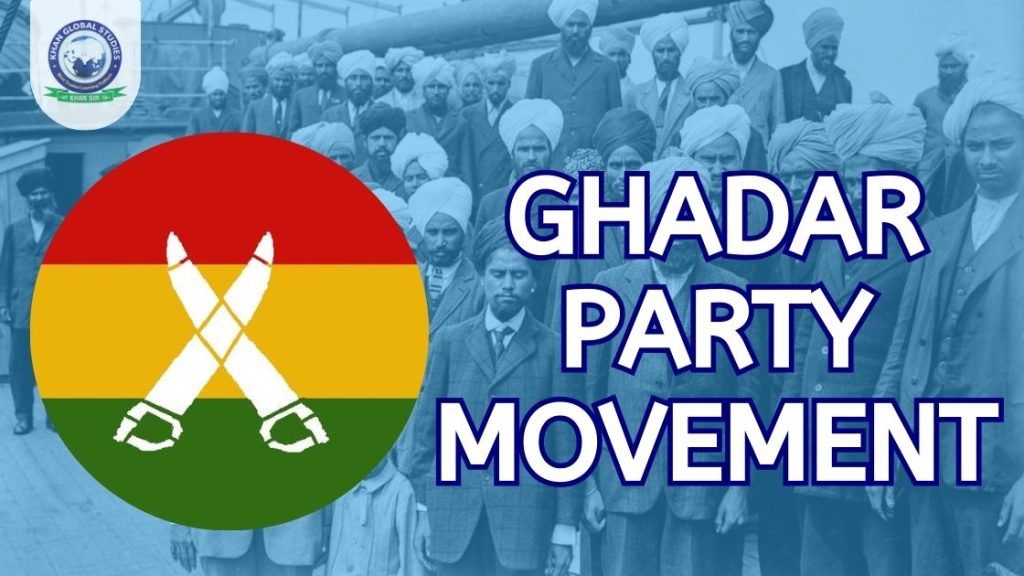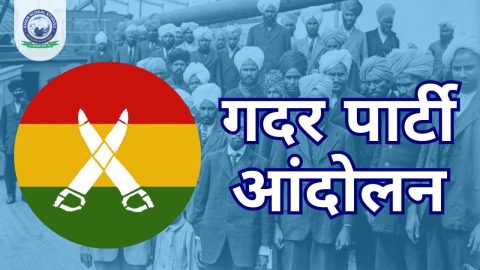The Ghadar Party Movement, or simply the Ghadar Party, was a significant chapter in India’s fight for independence. Founded in 1913 by Indian immigrants in the United States and Canada, it aimed to overthrow British colonial rule through an armed revolution.
Origins Across the Ocean
The Ghadar Party emerged from a growing sentiment of anti-colonialism among Indian expatriates, particularly Sikhs, on the West Coast of North America. Led by Lala Har Dayal, an exiled Indian revolutionary, the movement found its voice in the publication “The Ghadar” (meaning “revolution”). This weekly newspaper became a powerful tool for spreading revolutionary ideas and uniting Indians abroad.
Revolution from Afar
The outbreak of World War I in 1914 presented the Ghadar Party with an opportunity. Seeing Britain preoccupied with the war, some members, including Sohan Singh Bhakna, returned to India to incite an armed rebellion. They smuggled arms and attempted to spark a mutiny among Indian soldiers serving in the British army. This uprising, known as the Ghadar Mutiny, ultimately failed, with many revolutionaries facing execution.
International Connections and Internal Divides
Despite the setback in India, the Ghadar Party continued its activities abroad. They sought support from Germany and the Ottoman Empire, which were at war with Britain, in a plot known as the Hindu-German Conspiracy. However, this association with foreign powers also strained relations within the party itself. By 1917, the Ghadar Party fractured into communist and socialist factions, reflecting the ideological currents of the time.
Legacy of Rebellion
Though the Ghadar Party’s attempt at an armed revolution fell short, its legacy remains significant. It ignited a spirit of resistance among Indians both abroad and within the country. The movement’s message of self-rule inspired future revolutionaries, including Bhagat Singh, who became a symbol of India’s freedom struggle. The Ghadar Party stands as a testament to the unwavering determination of Indians to fight for their independence, even from distant shores.
Beyond Punjab
While the Ghadar Party had a strong Sikh presence, it was a consciously secular movement. Its leadership reflected this diversity, with Hindus and Muslims included in the founding group. The movement’s message resonated with a broader spectrum of Indians, particularly those facing discrimination abroad. The Ghadar Party found support in Indian communities across North America, Southeast Asia, and even East Africa.
Impact on British Raj
The Ghadar Movement rattled the British Raj. The spectre of a coordinated rebellion, fueled by Indians abroad, forced them to tighten control and enact stricter surveillance measures. The Lahore Conspiracy Case, which tried those involved in the Ghadar Mutiny, served as a chilling example of the consequences of dissent. However, the movement’s international connections also exposed vulnerabilities in British colonial power.
Socialist Undercurrents
The Ghadar Party’s ideology evolved. Initially focused on armed revolution, it increasingly incorporated socialist ideas. This shift reflected the growing influence of socialist movements in Europe and the appeal they held for Indian workers facing harsh conditions abroad. The party’s later communist faction further cemented the link between Indian independence and social justice.
The Ghadar Party’s story is one of courage, sacrifice, and the pursuit of freedom. Though their methods proved controversial, their determination to challenge British rule serves as an inspiration. The movement’s legacy continues to be debated by historians, but its place in India’s freedom struggle remains undeniable. You could also consider mentioning memorials or commemorations dedicated to the Ghadar Party in India or abroad to highlight their lasting impact.
Conclusion: A Spark That Ignited a Fire
The Ghadar Party Movement, though ultimately unsuccessful in achieving an immediate overthrow of British rule, played a pivotal role in shaping India’s fight for independence. It served as a catalyst, inspiring future generations of revolutionaries and leaving an indelible mark on the national consciousness. Here are some key takeaways to consider for your conclusion:
- Globalized Resistance: The Ghadar Party highlighted the international dimension of India’s freedom struggle. It demonstrated that Indians abroad were actively involved in the fight, forging connections and seeking support across borders.
- Shifting Ideologies: The movement’s evolution from armed revolution to incorporating socialist ideals reflected the changing political landscape. It showcased the growing influence of socialist thought and its appeal in addressing issues of social justice alongside national liberation.
- Enduring Legacy: The Ghadar Party’s legacy lies in its unwavering spirit of resistance and its role in igniting the flames of revolution. It serves as a testament to the unwavering determination of Indians, both at home and abroad, to fight for a free and just India.




